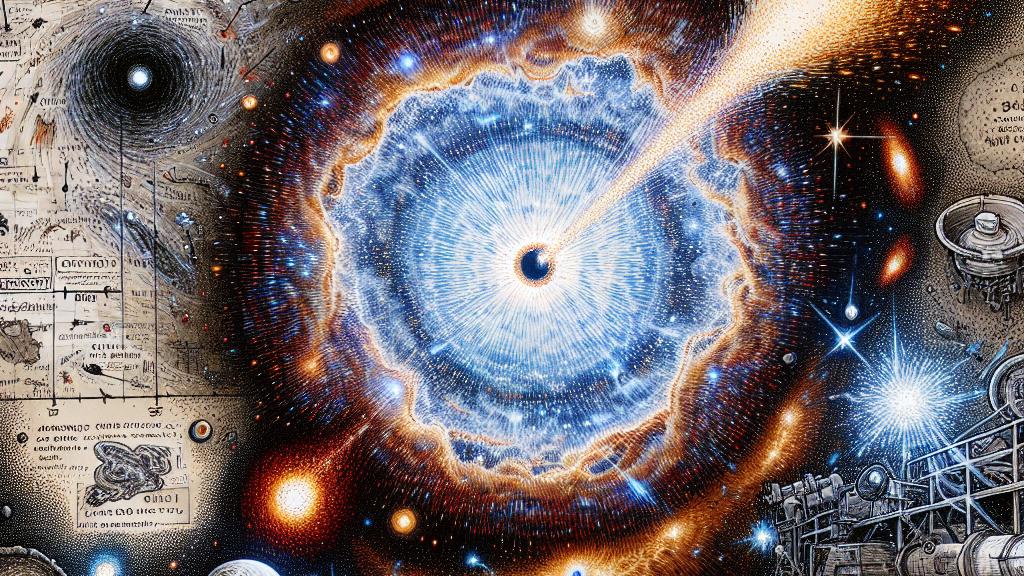Stability of Quasi-Periodic Eruptions in eRO-QPE2: A Comprehensive Study
Overview
- eRO-QPE2 showcases astonishing stability in its quasi-periodic eruptions (QPEs) across an impressive 3.5-year observation period.
- Research reveals consistent luminosity levels and eruption timings that challenge established patterns in astrophysics.
- An intriguing hypothesis suggests that interactions between a low-mass white dwarf and a supermassive black hole might drive these remarkable eruptions, paving the way for future exploration.

What are Quasi-Periodic Eruptions? A Cosmic Phenomenon
In the vast expanse of the universe, the galaxy 2MASX J02344872-4419325, located at a redshift of 0.0175, is home to the captivating eRO-QPE2. Discovered in 2021 using the eROSITA instrument, this source offers a window into quasi-periodic eruptions (QPEs). These intense X-ray bursts, which can be visualized as cosmic fireworks, originate from the region surrounding a supermassive black hole. In stark contrast to their more chaotic counterparts, eRO-QPE2 produces eruptions that unfold with mesmerizing consistency. Over a substantial span of 3.5 years, researchers meticulously monitored these eruptions, revealing that both the luminosity and occurrence rates held steady, like a celestial clock that refuses to falter, captivating scientists and stargazers alike.
Unwavering Stability: eRO-QPE2's Consistent Dance
What truly distinguishes eRO-QPE2 is its remarkable stability. Imagine this: on average, the eruptions recur approximately every 2.35 hours, maintaining this rhythm without missing a beat since 2022. While earlier data suggested a slight decrease in timing, recent observations depict a reliable pattern that challenges previous assumptions within the scientific community. This is particularly striking because other known QPE sources typically struggle with diminishing flux or increasing variability. Such durability evokes an analogy to a beloved song that plays perfectly, time and again, providing both solace and excitement. By closely analyzing this unusual behavior, researchers have begun to untangle the intricate dynamics governing black hole accretion processes, transforming our comprehension of these celestial giants in the cosmos.
Exploring the Origins: A Captivating Hypothesis Unveiled
As we delve deeper into the origins of these captivating eruptions, an intriguing theory emerges. Some scientists propose that the eruptions may stem from a low-mass white dwarf, approximately 0.18 solar masses, being partially stripped of its material by a nearby supermassive black hole weighing in at an astounding 230,000 solar masses. Picture this cosmic tug-of-war: the white dwarf, once stable, now faces the relentless gravitational pull exerted by the black hole. This interaction results in dramatic energy exchanges that manifest as stunning X-ray flares. While this hypothesis sparks great interest and fills many with excitement, it also highlights the need for further research to validate its plausibility. Thus, the investigation of eRO-QPE2 not only unveils the extraordinary behaviors of celestial bodies but also ignites the imagination of astronomers eager to explore the infinite depths of our universe—each finding a step toward unlocking its countless mysteries.

Loading...